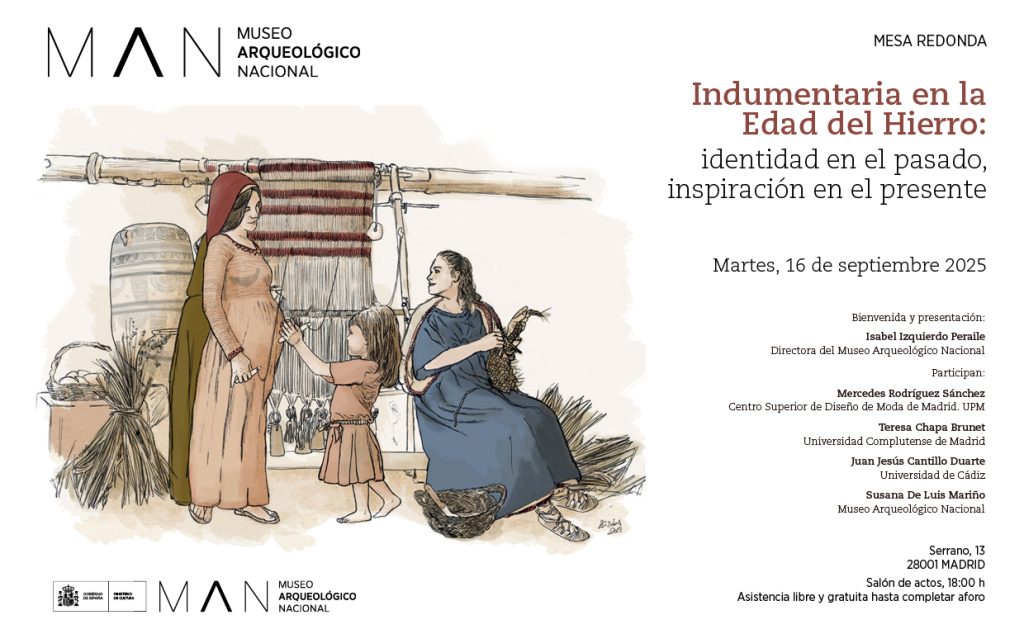Conference “El color del prestigio. Talleres de púrpura en el extremo sur peninsular” at the National Archaeological Museum 16 September 2025

Round Table: “Indumentaria en la Edad del Hierro: identidad en el pasado, inspiración en el presente”
Iron Age clothing (8th-1st centuries BCE) not only served to cover and protect the body from the weather, but also to display the social status and identity of its wearers. Its creation was determined by the raw materials available on the Iberian Peninsula, and its manufacturing techniques are known thanks to preserved material remains and texts from classical authors. Today, analyzing this clothing offers a better understanding of past societies, and its material culture serves as inspiration for artistic creations like fashion design.
This round table aims to provide more information on all of this. It will delve into how the past inspires current artistic creations (specifically fashion design) and what we know about clothing in Iberian culture. Additionally, it will showcase research on one of the most prized dyes of the past—purple extracted from the murex snail—and introduce the research project coordinated by the National Archaeological Museum that made this “showcase zero” possible.
INMAR-UCA researcher Juan Jesús Cantillo Duarte will participate with a talk titled “El color del prestigio. Talleres de púrpura en el extremo sur peninsular” He will discuss the production process for obtaining the famous purple dye from murex marine mollusks during the Iron Age.
Date and time: September 16, 2025, 6:00 PM
Location: Auditorium of the National Archaeological Museum, Madrid.
Registration: Free and open attendance until the hall reaches capacity.
Organizer: National Archaeological Museum.
More information:

